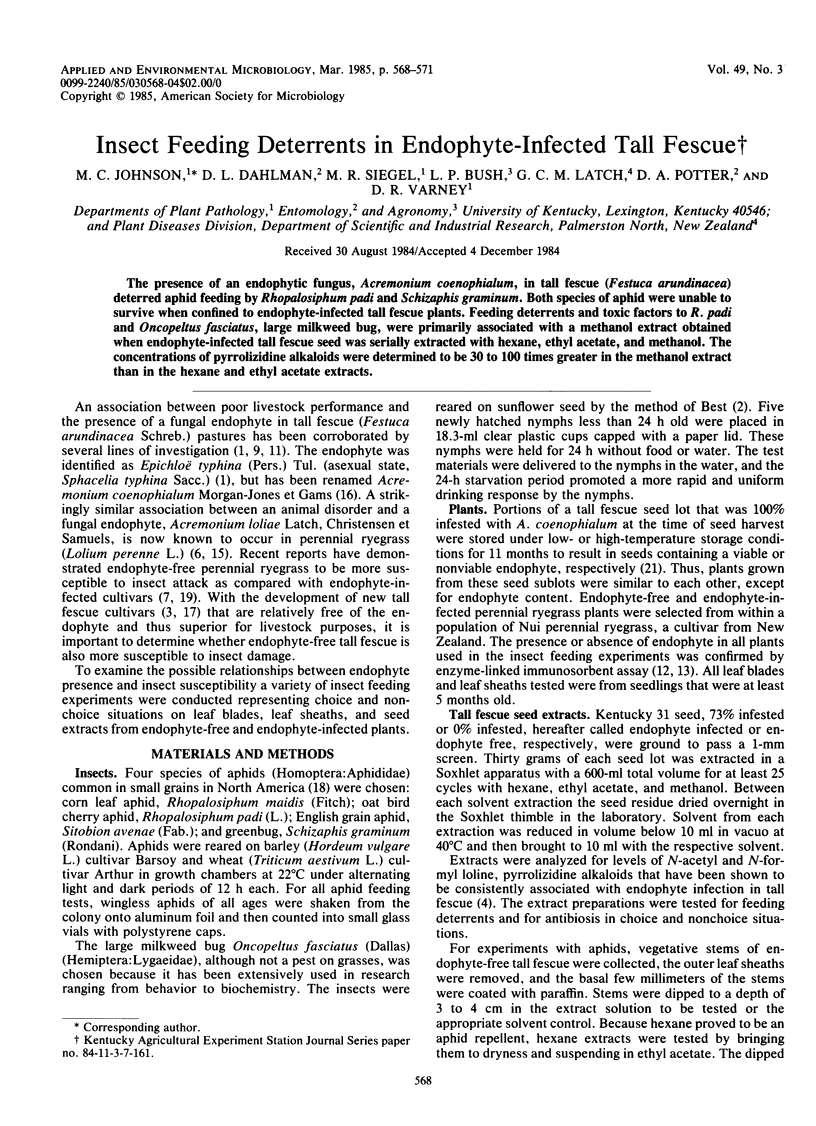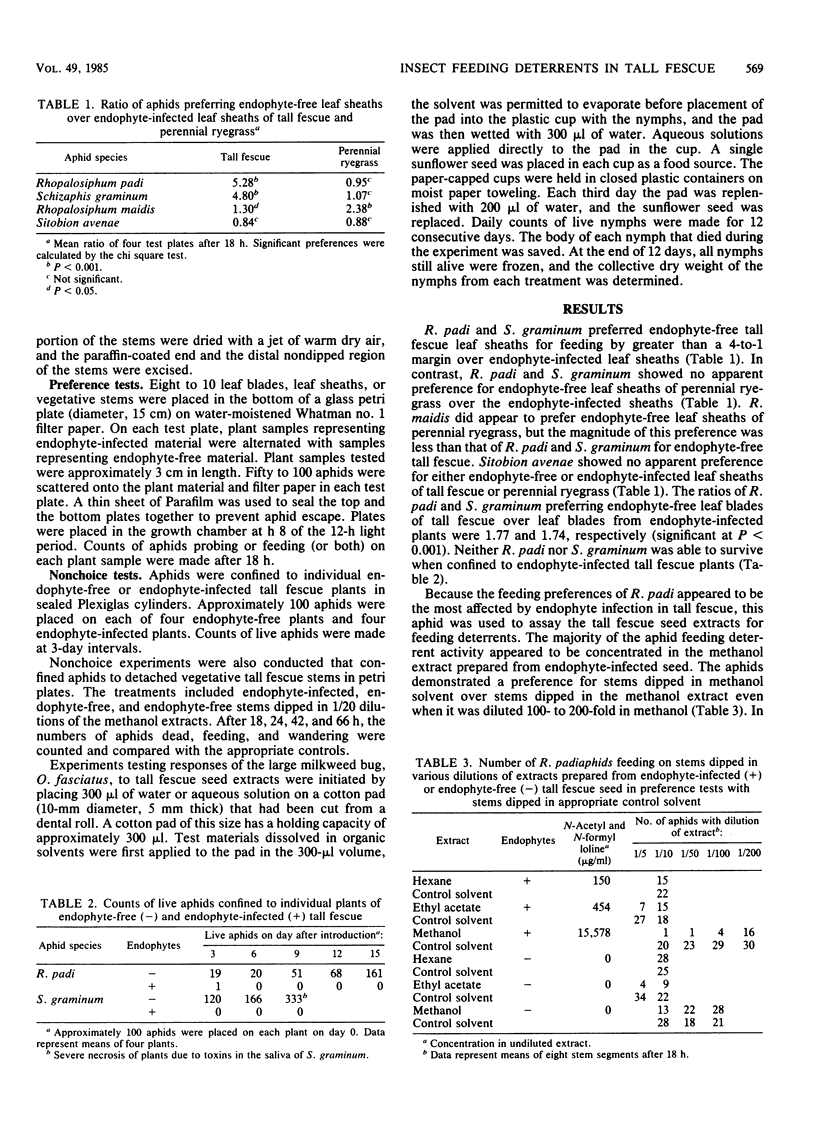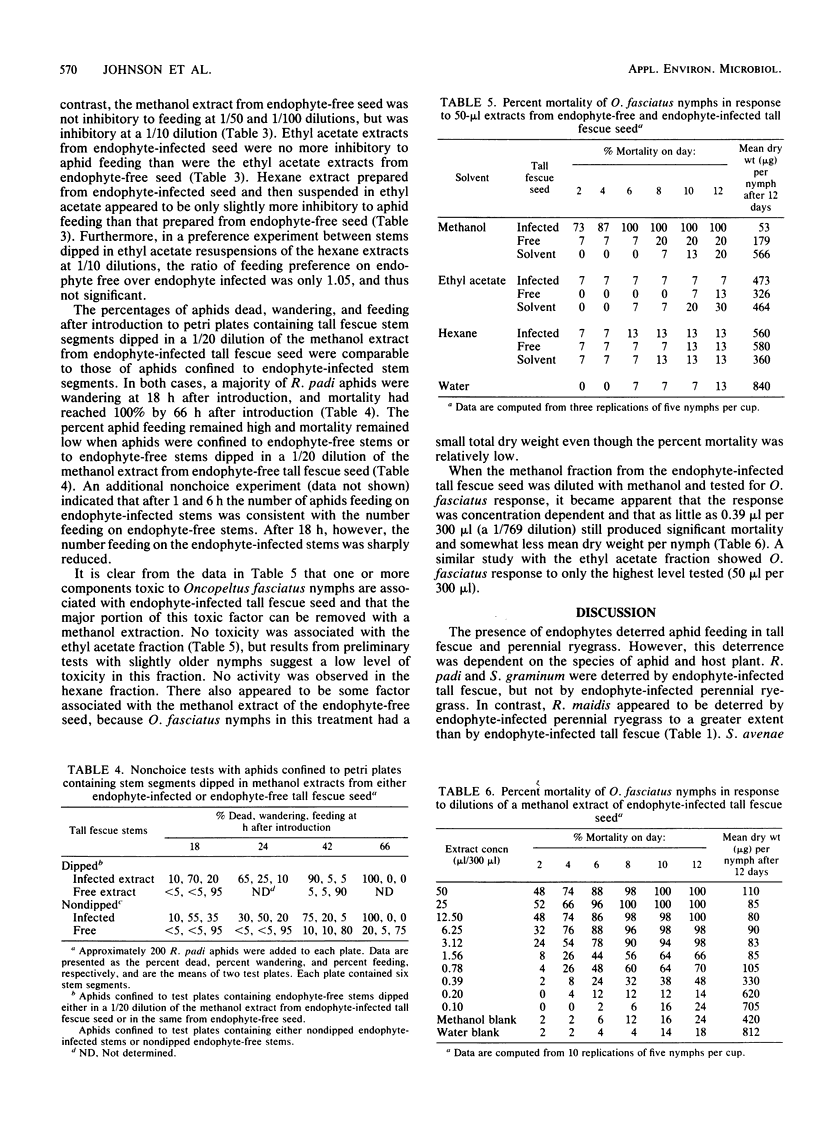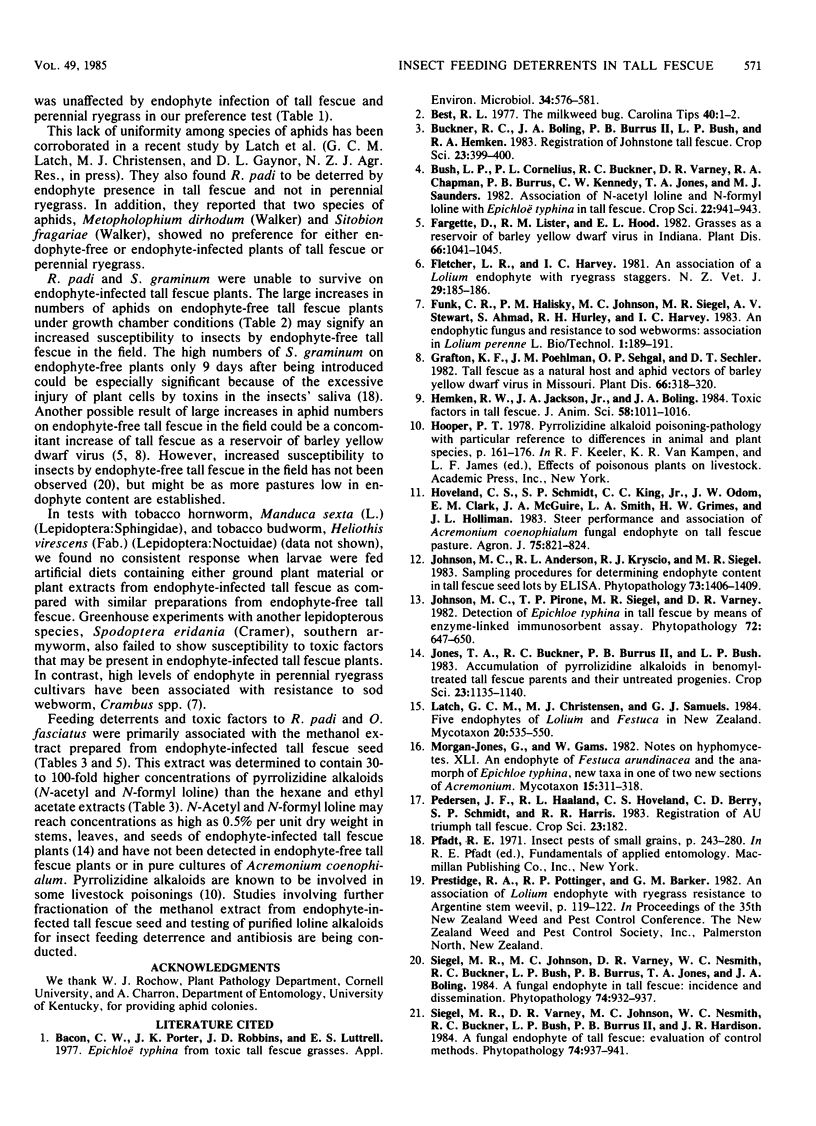Abstract
The presence of an endophytic fungus, Acremonium coenophialum, in tall fescue (Festuca arundinacea) deterred aphid feeding by Rhopalosiphum padi and Schizaphis graminum. Both species of aphid were unable to survive when confined to endophyte-infected tall fescue plants. Feeding deterrents and toxic factors to R. padi and Oncopeltus fasciatus, large milkweed bug, were primarily associated with a methanol extract obtained when endophyte-infected tall fescue seed was serially extracted with hexane, ethyl acetate, and methanol. The concentrations of pyrrolizidine alkaloids were determined to be 30 to 100 times greater in the methanol extract than in the hexane and ethyl acetate extracts.
Full text
PDF



Selected References
These references are in PubMed. This may not be the complete list of references from this article.
- Bacon C. W., Porter J. K., Robbins J. D., Luttrell E. S. Epichloë typhina from toxic tall fescue grasses. Appl Environ Microbiol. 1977 Nov;34(5):576–581. doi: 10.1128/aem.34.5.576-581.1977. [DOI] [PMC free article] [PubMed] [Google Scholar]
- Fletcher L. R., Harvey I. C. An association of a Lolium endophyte with ryegrass staggers. N Z Vet J. 1981 Oct;29(10):185–186. doi: 10.1080/00480169.1981.34839. [DOI] [PubMed] [Google Scholar]
- Hemken R. W., Jackson J. A., Jr, Boling J. A. Toxic factors in tall fescue. J Anim Sci. 1984 Apr;58(4):1011–1016. doi: 10.2527/jas1984.5841011x. [DOI] [PubMed] [Google Scholar]


